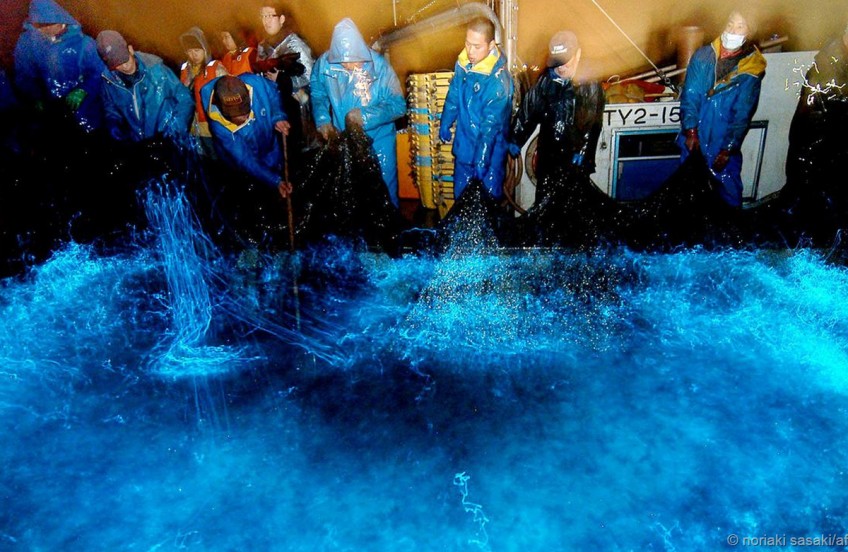Japan's mysterious glowing squid

At 3am on a bitterly cold March night, I found myself standing on a 10m-long fishing boat in the middle of the Sea of Japan. The temperature hovered around freezing and a kerosene-soaked scrapwood fire blazed in a metal pail on the ship's slippery deck. Above, a flock of screeching gulls circled and occasionally dive-bombed our ship, while a dozen fisherman were frantically hauling up their nets, trying to reel in their catch before the birds did.
Suddenly a blaze of neon blue flashed from underneath the water and thousands of firefly squid squirmed around in the nets, lighting up the cold black night. It was Hotaru Ika season: every year from March to June, these tiny bioluminescent cephalopods ignite the 14km-long shoreline of Toyama Bay in a spectacular light show that rivals the neon canyons of Tokyo's Shinjuku.
Located on Japan's west coast about 350km northwest of Tokyo - and recently made more accessible with the March 2015 opening of a high-speed bullet train - Toyama Prefecture is one of the few places on the planet to see these strange creatures in the wild. By day, the squid dwell in the deep, murky fathoms of Toyama Bay. But each night they ascend to the surface to search for potential mates. An evolutionary phenomenon called counter-illumination allows the squid to camouflage themselves by blending in with the light cascading in from above, thus thwarting off predators. The light each one emits from its tentacles is not enough to read a book by, but when tens of thousands of them come together they create a stunning electric-blue display that is one of the most arresting and colourful marvels on Earth.
Read the full article here.